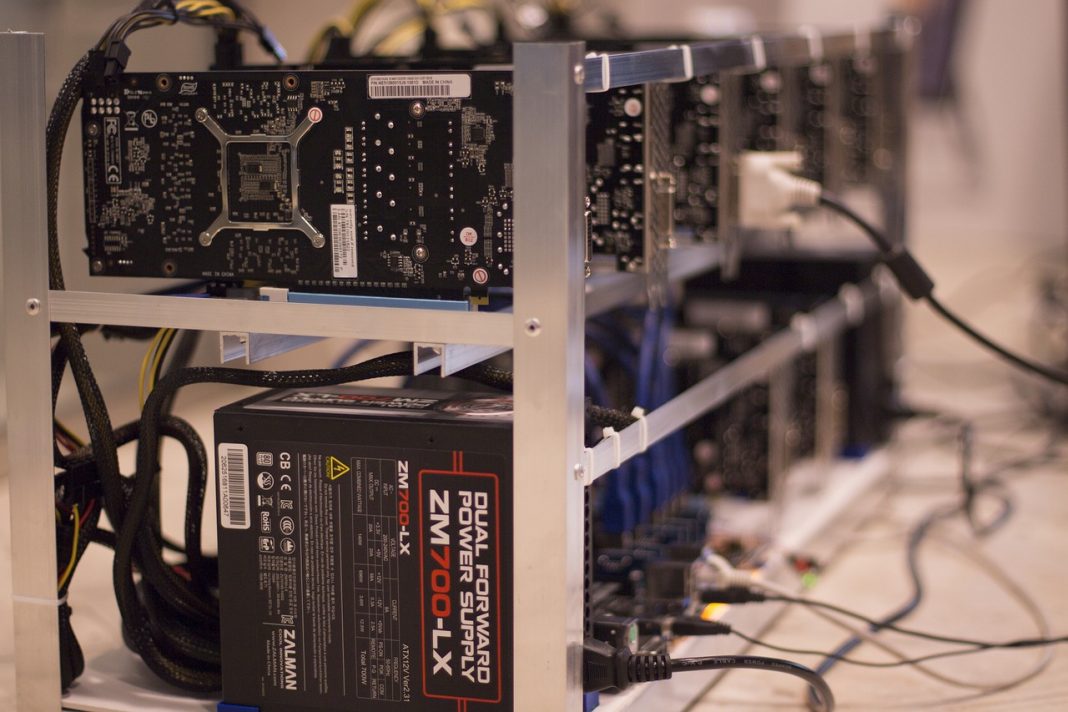Bitcoin mining is performed by high-powered computers that solve complex computational math problems; these problems are so complex that they cannot be solved by hand and are complicated enough to tax even incredibly powerful computers.
The result of bitcoin mining is twofold. First, when computers solve these complex math problems on the Bitcoin network, they produce new bitcoin. And second, by solving computational math problems, bitcoin miners make the Bitcoin payment network trustworthy and secure by verifying its transaction information.
When someone sends bitcoin anywhere, it’s called a transaction. Transactions made in-store or online are documented by banks, point-of-sale systems, and physical receipts. Bitcoin miners achieve the same thing by clumping transactions together in “blocks” and adding them to a public record called a blockchain. Nodes then maintain records of those blocks so that they can be verified into the future.
When bitcoin miners add a new block of transactions to the blockchain, part of their job is to make sure that those transactions are accurate. In particular, bitcoin miners make sure that bitcoin is not duplicated, a unique quirk of digital currencies called double-spending.
Rewarding bitcoin miners
With as many as 300,000 purchases and sales occurring in a single day, verifying each of those transactions can be a great deal of work for miners. As compensation for their efforts, miners are awarded bitcoin whenever they add a new block of transactions to the blockchain.
The amount of new bitcoin released with each mined block is called the block reward. The block reward is halved every 210,000 blocks (or roughly every four years). In 2009, it was 50. In 2013, it was 25, in 2018 it was 12.5, and in May of 2020, it was halved to 6.25.
Bitcoin successfully halved its mining reward—from 12.5 to 6.25—for the third time on May 11, 2020.
This system will continue until around 2140. At that point, miners will be rewarded with fees for processing transactions that network users will pay. These fees ensure that miners still have the incentive to mine and keep the network going. The idea is that competition for these fees will cause them to remain low after halvings are finished.
These halvings reduce the rate at which new coins are created and, thus, lower the available supply. This can cause some implications for investors because other assets with low supply—like gold—can have high demand and push prices higher. At this rate of halving, the total number of bitcoin in circulation will reach a limit of 21 million, making the currency entirely finite and potentially more valuable over time.
Verifying Bitcoin transactions
In order for bitcoin miners to actually earn bitcoin from verifying transactions, two things have to occur. First, they must verify one megabyte (MB) worth of transactions, which can theoretically be as small as one transaction but are more often several thousand, depending on how much data each transaction stores.
Second, in order to add a block of transactions to the blockchain, miners must solve a complex computational math problem, also called a proof of work. What they’re actually doing is trying to come up with a 64-digit hexadecimal number, called a hash, that is less than or equal to the target hash. Basically, a miner’s computer spits out hashes at different rates—megahashes per second (MH/s), gigahashes per second (GH/s), or terahashes per second (TH/s)—depending on the unit, guessing all possible 64-digit numbers until they arrive at a solution. In other words, it’s a gamble.
Bitcoin mining analogy
Because bitcoin mining is essentially guesswork, arriving at the right answer before another miner has almost everything to do with how fast your computer can produce hashes. Just a decade ago, bitcoin mining could be performed competitively on normal desktop computers. Over time, however, miners realized that graphics cards commonly used for video games were more effective, and they began to dominate the game. In 2013, bitcoin miners started to use computers designed specifically for mining cryptocurrency as efficiently as possible, called application-specific integrated circuits (ASICs). These can run from several hundred dollars to tens of thousands of dollars, but their efficiency in mining bitcoin is superior.
Today, bitcoin mining is so competitive that it can only be done profitably with the most up-to-date ASICs. When using desktop computers, graphics processing units (GPUs), or older models of ASICs, the cost of energy consumption actually exceeds the revenue generated. Even with the newest unit at your disposal, one computer is rarely enough to compete with what miners call mining pools.
A mining pool is a group of miners who combine their computing power and split the mined bitcoin between participants. A disproportionately large number of blocks are mined by pools rather than by individual miners. Mining pools and companies have represented large percentages of Bitcoin’s computing power.


